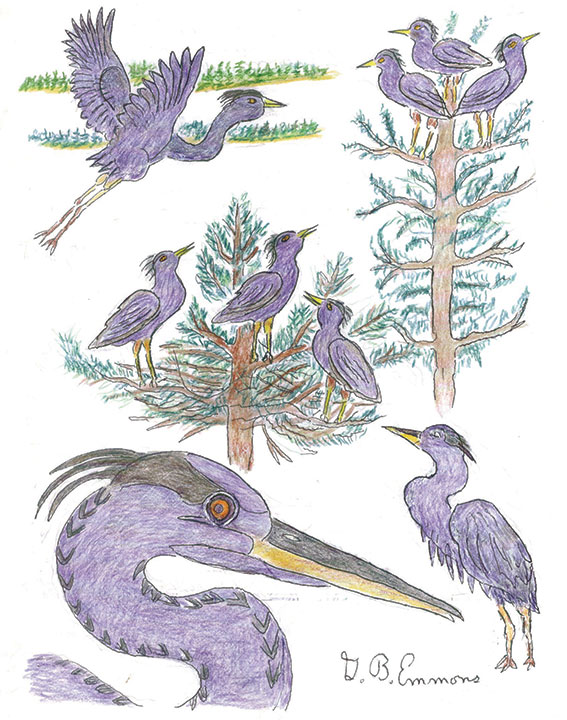In late winter, the great blue herons are the first to be seen with lumbering wing beats from over the horizon of Little Bay in Fairhaven. They are very noticeable in coastal flight with long S-shaped necks of their Florentine-shaped figurine profile, pointing the way toward open waters liberated from winter bondage.
Their welcome arrival is often well ahead of other waterfowl migrations still making up in flocks several hundred miles behind them. As they pass Ashley Island, clearly identified and classified from our picture window, the bird-watching seasonal panorama has officially and vividly come alive with an awareness to be appreciated.
As illustrated, males are the first to arrive to stake their claim on a preferred nesting site, sometimes the same as last year or even in the same tree, simply by building a new one directly above last year’s.
When females finally show up, males attract them to the new abode by performing an elaborate courtship dance. To motion her attention, he will erect and wave his regal head plume until she responds. After the two join one another as partners, they both clack their bills together in an avian consent ceremony to procreate a family of three fledglings, as in my illustration. This will soon keep them both busy for long periods of time at the water’s edge.
When looking to find prey, they stand motionless with head and beak drawn back until a sudden sighting releases a hair-trigger that springs the point of the bill with lethal force and deadly accuracy. The heron can close up the air-intake valve on its bill that underwater can scoop up and retrieve a variety of fish, frogs, salamanders, or small turtles. They also easily take insects, rodents, and birds at the edge of a marsh.
Both parents feed their young by regurgitation, making a diversity of edible creatures appetizing for small chicks at an early age. To be so well fed, the offspring can take flight in less than two months and be able to launch their own migration before the end of summer. Or if they are well situated, they can handle severe winter weather longer and farther north than most other species.
Because of this successful reproduction in raising their young, the latest American breeding-bird survey estimates a continental population of 83,000 reproducing pairs that, with this mobility, can be found almost all across North America. Their timeless broad survival at the water’s edge since the ancient formation of the evolution of living species originally crawled out of the primordial soup of the ocean millions of years ago hints at supernatural powers of survival.
The narrative of the great blue heron might well be written in the stars of the night sky, shining down on the eve of the vernal equinox, when the hours of light and shadow are the same all over the world. With the planetary cycle of tidal pull over the universe, the arrival of spring again proves to be a spiritual, environmental awareness that includes the great blue heron for our appreciation as birdwatchers.
By George B. Emmons
